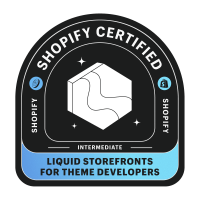The e-commerce experience is an overall customer experience, or how customers regard their communication with the brand. Customer experience covers online and offline experiences from the first time a customer hears about a business name via the post-purchase process. E-commerce experience refers particularly to the customer experience when buying products or services online.
Frequent mistakes that disrupt the shopping experience #
There are many ways to make mistakes in creating an e-commerce experience, but there are a few far-too-common. Like any part of the customer experience monitoring approach, the company ought to consider the entire purchase process from the client’s view.
Points that slow down or frustrate buying process can include:
- Needing customers to produce and register an account before purchasing
- Having a low quality or too-small pictures of your products
- Not considering the mobile experience for clients
- Making it tough for customers to call you
Dealing with these common problems can significantly increase the number of clients who shop from the website, make an effective purchase, and return to do so again.
How to improve e-commerce experience #
Comprehending consumer complete satisfaction and sentiment is important for boosting e-commerce customer experience. Paying attention to what the customers believe and feel about the e-commerce experience is the most effective method to improve clients’ satisfaction. The e-commerce experience for each company is one-of-a-kind. That’s why trying to presume what clients want when they make an online purchase can be futile.
Metrics can show with certainty when and where customers leave the e-commerce site without purchasing. However, the company can also directly ask customers what is important and needs to be fixed. It is a good way to determine what people really think about its e-commerce business. Here are industry-proven methods for improving the overall shopping experience.
Social media platforms #
Customers will usually leave comments regarding the company products, solutions, and online experience on your social media channels. Responding quickly to those remarks is necessary so consumers know the brand is listening to their opinions. This is an opportunity for e-commerce brands to gather those remarks and analyze them to see if any patterns show up. The company can engage customers straight to provide support and thank them for their feedback on the concern while solving the issue.
Live chat with customers #
Live chat is an additional tool customers might use when they have questions regarding the company product and services. It provides a fast, simple means to get in touch and address troubles without much effort on the part of the customer, which’s a big part of client satisfaction.
Live chat, as well as chatbot enables e-commerce organizations to respond to concerns from consumers rapidly, without the customer being required to leave the e-commerce platform to locate solutions elsewhere.
Product content #
Placing top-notch product web content on the business’ site gives an exceptional experience for e-commerce customers. The products must be presented enticing and precise, so buyers know what to expect when they purchase.
Quality product web content serves many objectives. It’s an excellent advertising method, certainly, and it reels in sales. But it can also help to educate consumers concerning the products and company, respond to any questions they might have before or throughout the acquisition procedure, and please any kind of issues they have.
Augmented reality #
Augmented reality experiences in e-commerce are still unique, and they represent a trend that tends only to grow more. Among the biggest drawbacks of online buying is that consumers can’t see how clothes will look on them or just how a mattress feels, making prospective buyers delay purchasing, and Augmented reality can assist bridge this void.
Product images #
When the images are not adequate, they do not represent the product and do not make customers want to buy it. Consisting of premium, eye-catching, precise product photos on an e-commerce platform engages clients to get drawn right into item pages. Images from e-commerce products can create or abort conversion rates of e-commerce businesses.
Product video clips #
It is tough for customers to understand how a product functions and moves just from an image, no matter its quality. That’s where product videos are useful for online retailers. For example, Patagonia features videos of its garments on models on every one of its item pages. This allows prospective customers to see how the items relocate and fit on the body when in motion, which aids raise consumer self-confidence before purchasing.
Do you want to learn more about e-commerce? Continue reading about → E-commerce customer journey.

